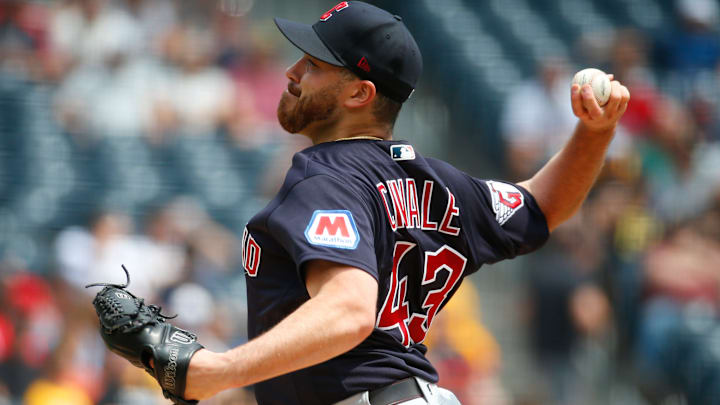With the eyes of every Rays fan on them approaching the deadline, the Rays’ front office delivered by reportedly acquiring Aaron Civale, a piece that the organization is hopeful will solve the starting rotation’s depth problems.
According to Statcast, Civale has thrown six different pitch types this year, which gives pitching coach Kyle Snyder plenty to work with. He features a cutter (38.7% usage), a curveball (25.7%), a sinker (17.1%), a four-seam fastball (12.1%), a slider (4.6%) and a rarely thrown split-finger pitch (1.9%). This combination of multiple pitch types and shapes makes Civale valuable, and it is up to the Rays to determine what sequence of these would be best for him.
Aaron Civale's curveball is a huge addition for the Rays
Civale’s most intriguing pitch though is his curveball. Civale uses this pitch around 25% of the time, and the statistics show why it is such a lethal weapon. Pitchingbot’s Stuff+ is a stat used to rate individual pitches based on their velocity and movement, essentially quantifying their nastiness. Among all pitchers with 50 innings pitched this year, Civale has the highest curveball grade, a whopping 156. For reference, fellow Ray Tyler Glasnow grades out at 152, good enough for second place.
Civale isn’t just throwing high-movement pitches and hoping they hit the target either. According to Location+, the sister stat of Stuff+ that rates each specific pitch’s location, Civale’s curveball grades out at 115, tied with George Kirby for second in all of baseball, only trailing Tyler Anderson.
The Rays have seen plenty of success over the years with curveball-heavy starters. The previously mentioned Glasnow is a great example of this, as his elite secondary pitch has allowed him to become one of the most feared arms out there. Shane McClanahan’s looping lefty curve last year also became a wipeout pitch, as it allowed him to rack up strikeouts galore against swing-happy teams. Civale has never seen big strikeout numbers (especially this year), but he clearly has incredible stuff to fool batters. Getting swings and misses will be the next step in Civale’s improvement, and the combination of Kyle Snyder’s track record and Civale’s peripherals make one optimistic that he will be racking up Ks in no time.
The Rays nailed the Aaron Civale trade, even if they had to give up a great prospect to get him. His curveball has some of the highest potential of any breaking pitch in the game, and he is now going to a team that
